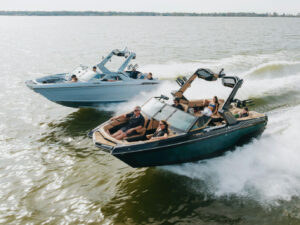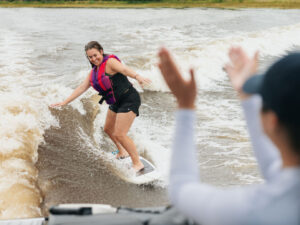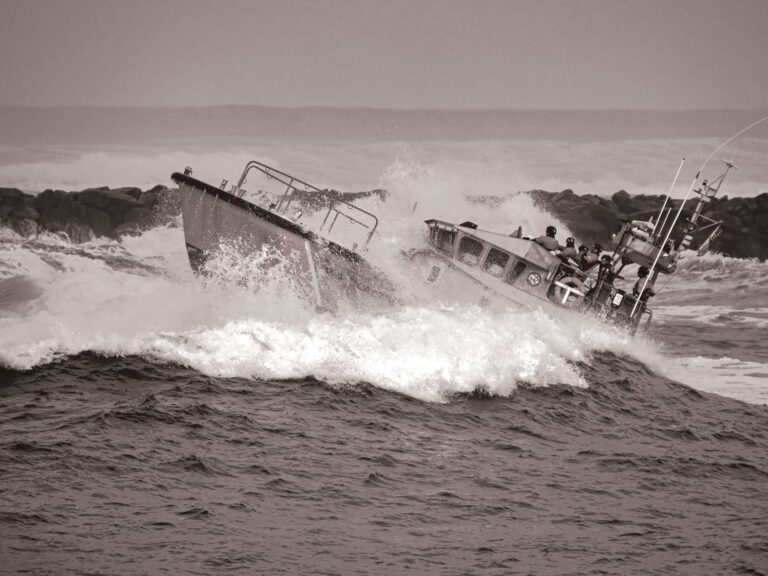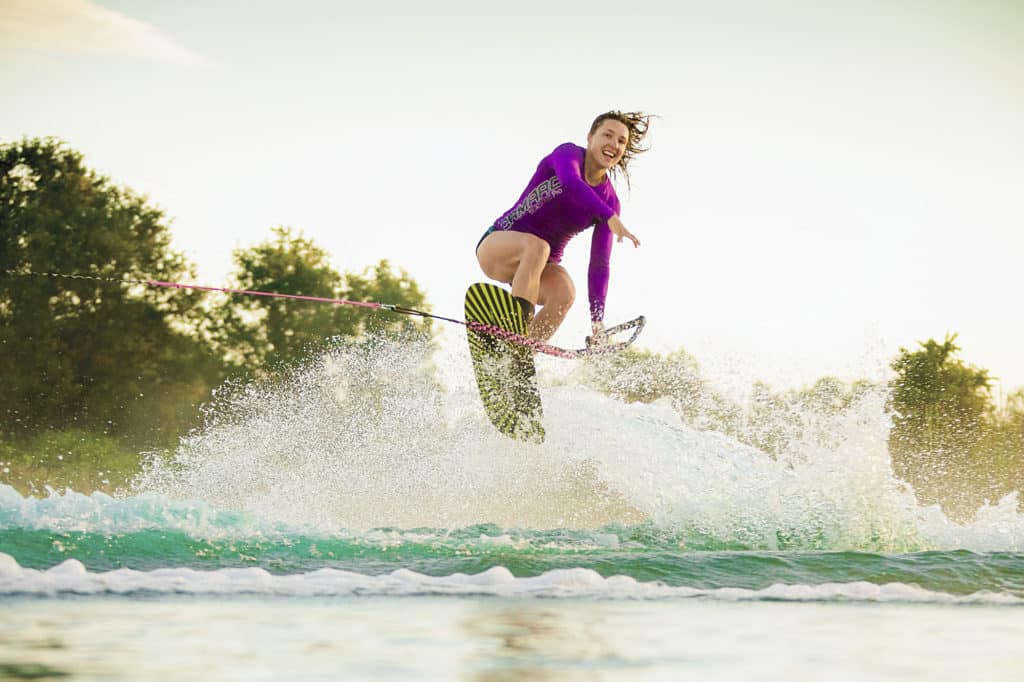
Here’s a challenge for you: Go to a water-ski tournament and count how many women you see. How many skiers? How many judges, drivers and scorers? The numbers might surprise you. In nearly every aspect of water skiing, men outnumber women. Too often, these tournaments are organized by men, run by men, and frequented by men. Walking up to a starting dock filled with men, then to be driven and judged by men is often intimidating for female skiers. Though not overtly sexist, this atmosphere is perhaps not as inviting to women as it could be, and the number of competitors reflects that. With the number of male American water skiers nearly tripling that of female skiers, it’s time to ask: How can we get more women water skiing?
Some people still regard sports as a male activity. They gloss over the gender disparity in our sport with general statements, like women don’t play sports as much as men do, and the strength required for skiing favors men. Jeff Surdej, president of the American Water Ski Association, says, “I think that the brute strength it takes to do three-event skiing might naturally lean toward favoring males.”
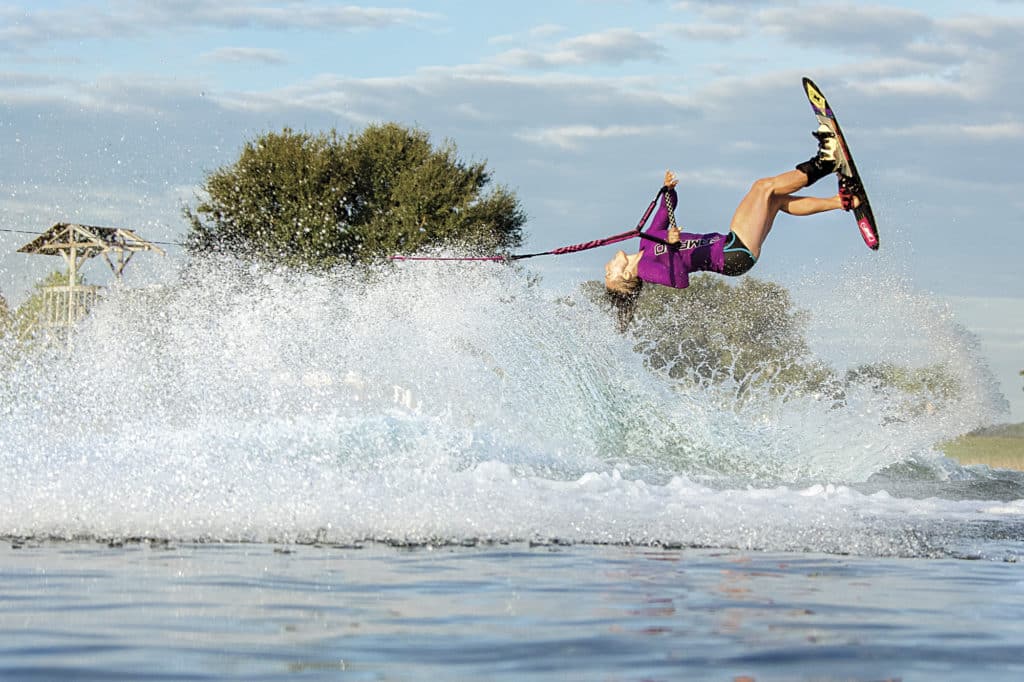
“Bullsh!t,” says Natallia Berdnikava, female world overall record-holder. “If you do this sport since you were a kid, female athletes have the exact same opportunities — and even strengths — as the guys to develop and be a great overall skier.” In fact, a greater percentage of female skiers do all three events — 16.5 percent as opposed to 13.5 percent of men. Plus, Berdnikava’s record has a higher NOPS value than the male record.
The numbers show that women have the innate power to be three-event skiers, so that isn’t the issue. Perhaps the problem is cultural. “I would bet that our sport, in general, has always had that ratio, just like most sports do,” says Surdej. “I’m sure more men play baseball, bowl, fish — you name it. Sports are just more geared toward males.”
Yes, more men do sports, but that doesn’t mean it has to be that way. The reality is that water-ski participation numbers for both genders have taken at hit the past two decades. We need more skiers for water skiing to thrive. If more women are skiing, more people are skiing. If more people are skiing, the sport is growing.
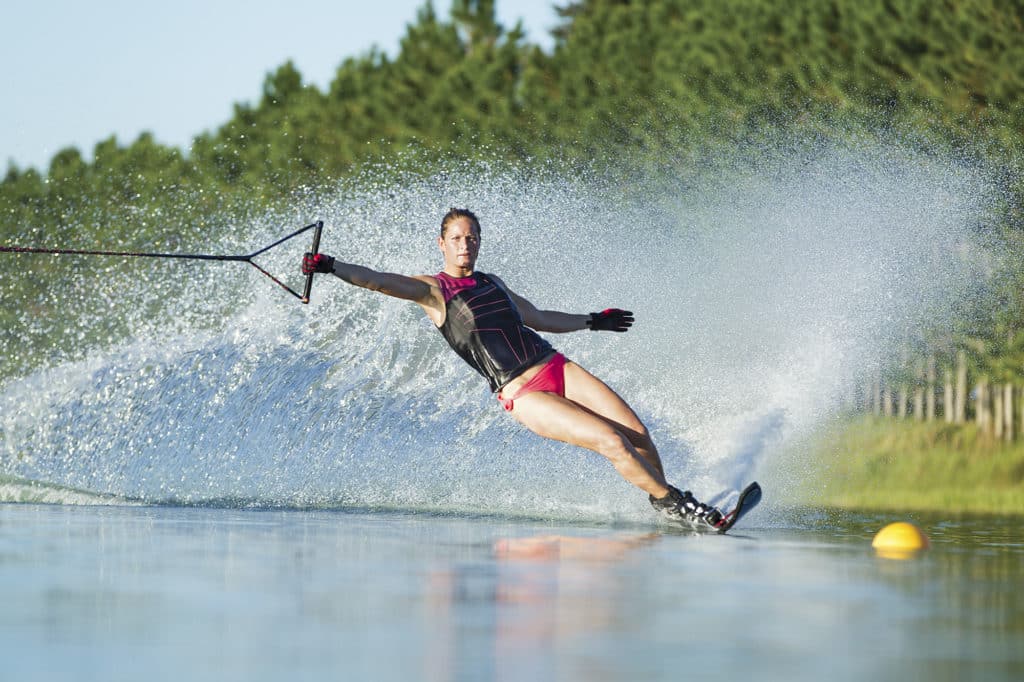
LOOK BACK TO MOVE FORWARD
Jennifer LaPoint, who spearheaded a professional women’s tour and female-focused ski clinics in the ’90s through her organization, Women in Water Skiing, has worked to lower the barriers to skiing.
“I think you can go back to doing what we were doing at the time,” she says, “which is making opportunities for women to go boating and skiing, learning all the skills required to do that — boat driving, trailering, changing the oil — so they can have their own boat.”
Those necessary skills are often only taught to men, and LaPoint’s goal with her clinics was to allow more women to go out skiing without depending on men. Women teaching other women these skills in a way that is nonthreatening rather than condescending is crucial to empowering more women to ski on their own.
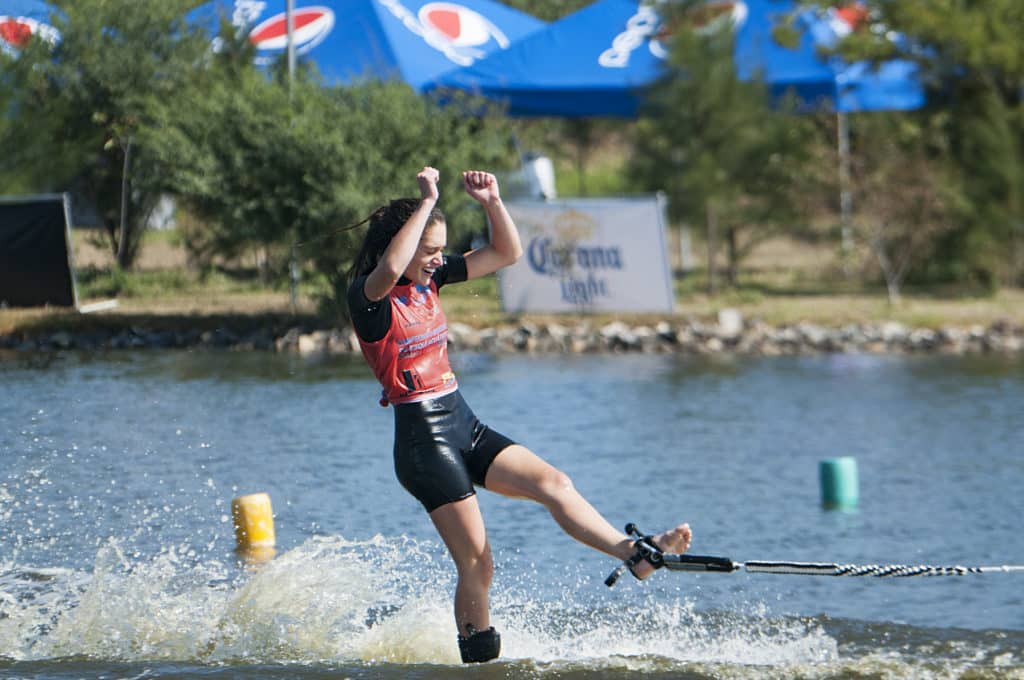
THE FUTURE OF WATER SKIING
April Coble-Eller, 26-time U.S. national champion and head coach at Coble Ski School, believes that targeting recreational skiers is the key to growth. “That whole world of recreational skiers that a lot of people have been neglecting because they weren’t competition skiers, that’s how I’ve made my livelihood for the last 25 years,” she says. “And there are so many recreational skiers who absolutely love to ski, and they just need some driving tips and skiing tips.” She hosts a “Get Fit for Women Only” week at her school, which is an intensive training week for adult women of all skill levels. She aims to lower the barriers for new skiers. “Our sport is expensive, and it is hard, and until we figure out ways to overcome those two things, it’s going to be tough to make it grow,” she says. She’s in the process of producing an instructional video for new skiers so they can learn the necessary skills more quickly and easily than on their own.
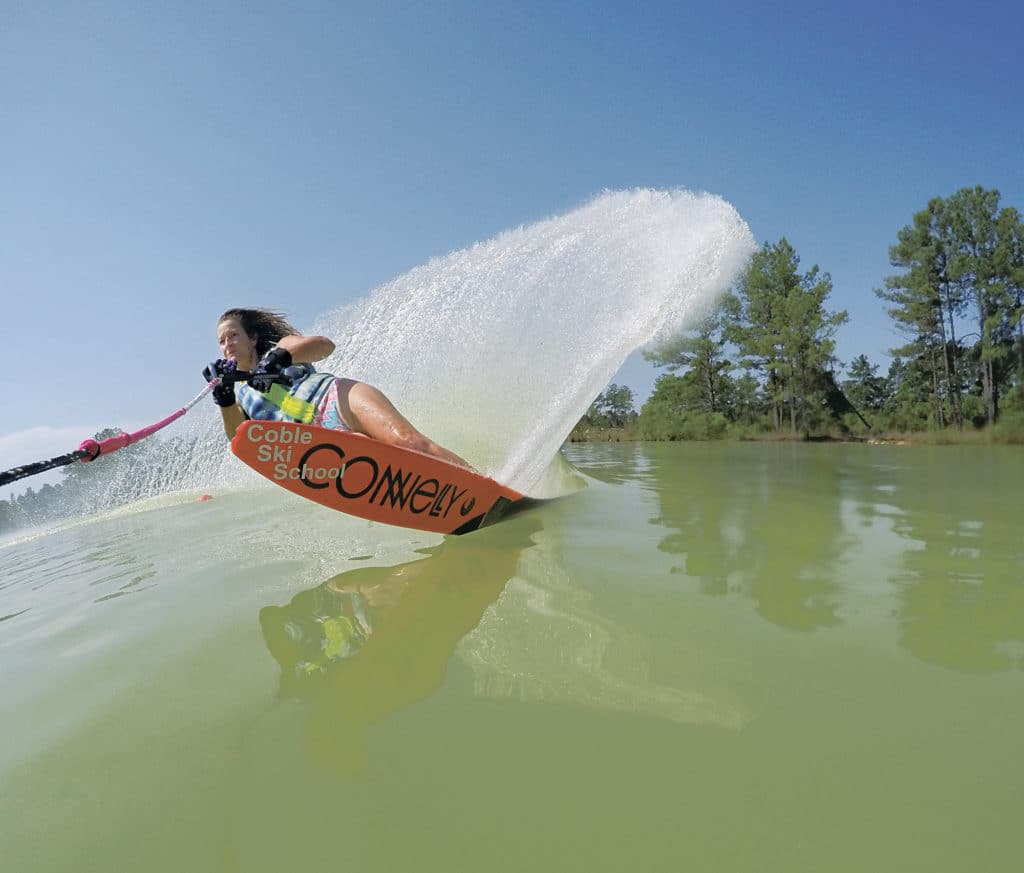
Encouragement for girls must be part of our approach to growing the sport. Some girls seek out competitive sports, and some don’t, but that’s not a deal-breaker. Water skiing doesn’t have to be about competition. It can be about fun and friendship.
LaPoint advises: “You can’t make somebody a competitor if they’re not naturally competitive, but you can help them enjoy the sport. Find out what it is about the sport that they value and provide that so they get joy out of it.”
For many skiers, this can be family time, traveling to new places or seeing their friends at tournaments. Whatever it is, capitalizing on that and creating positive experiences for girls can get them hooked for life.
A new wave of young female skiers has the potential to nurture competition at all levels. Imagine a tournament with a fresh crop of female junior skiers on the dock. They are there to beat their own personal bests, to compete with each other, to build the lasting friendships you find among male pros and Big Dawg skiers who have challenged each other for decades. The girls become an enthusiastic fan base for elite women skiers. The achievements of the female pros become coveted, and soon the number of female pros balloons as the girls realize that they have the community support to ski at that level.
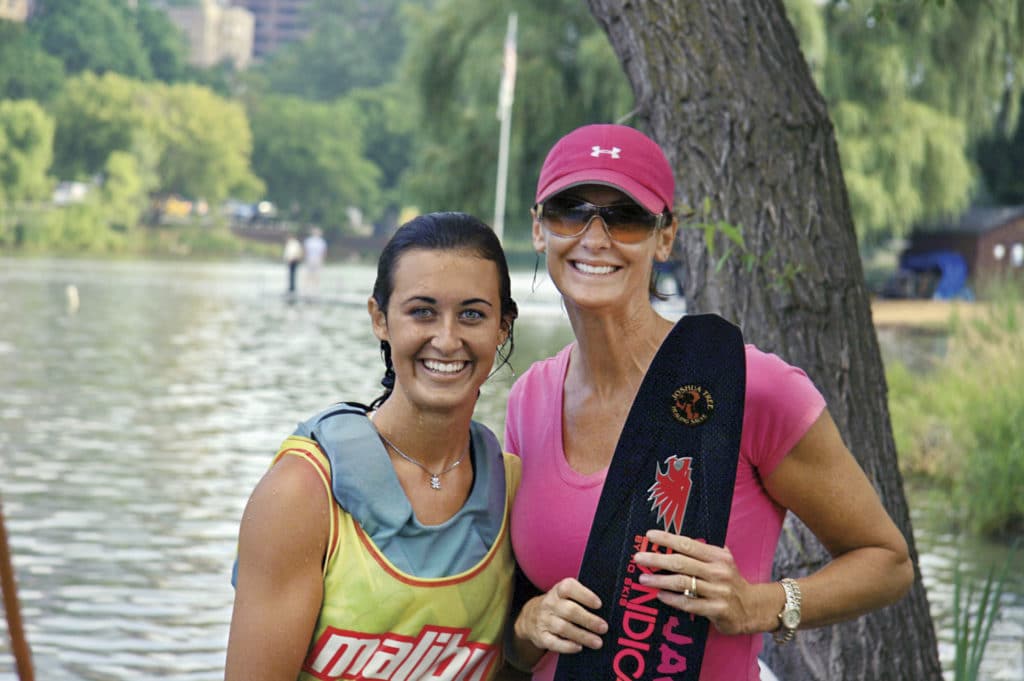
KEEPING UP WITH THE TIMES
According to NBC, the main broadcaster of the Olympics, the women’s gymnastics finals was the second most-streamed event at the 2012 Olympics, and seven of the 10 most clicked athletes on the website were women. The 2015 Women’s World Cup finals was the most watched soccer match in history, clocking in at nearly 23 million viewers worldwide.
The female prize money in nearly every professional water-ski tournament is less than it is for men. For example, according to the IWSF, the 52nd Masters offered $7,100 for the men’s jump champion, but only $5,550 for the women’s champ. “Of course I wish it would change,” says female jump world-record holder Jacinta Carroll. “I train just as hard, sacrifice just as much and put in just as much time and effort as the males. At the end of the day, when I win, I walk home barely making a profit despite all that goes into the sport.” Some sports are changing. Grand Slam tennis tournaments pay women equally and sometimes sell out quicker than the men’s, and Ronda Rousey boasts the highest salary of any fighter in the UFC.
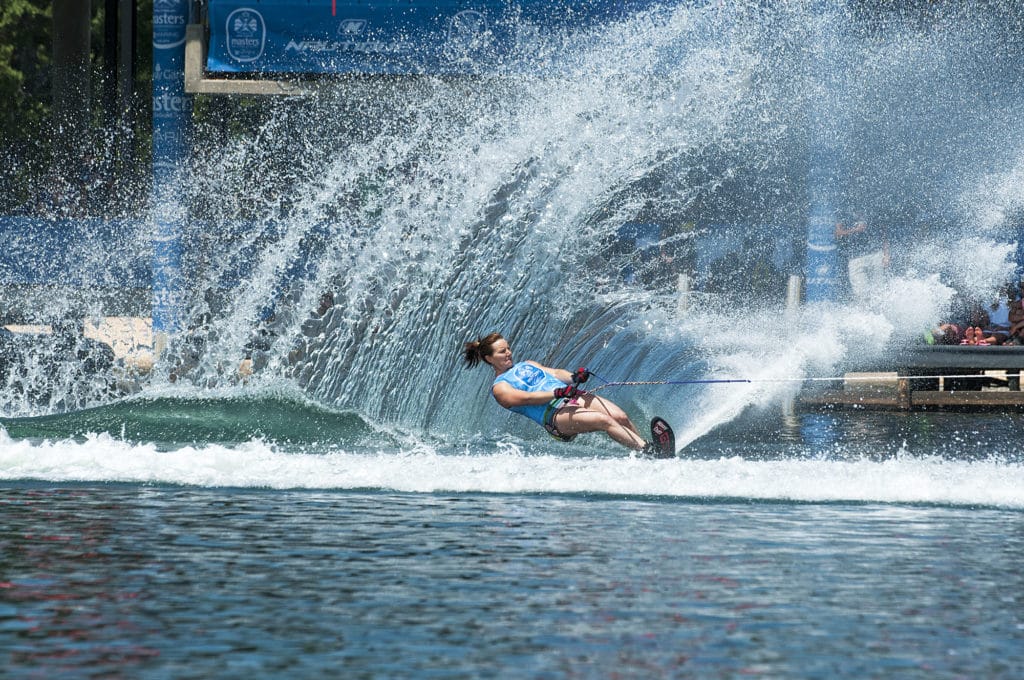
AND THEN THERE’S PLAIN OLD SEXISM
At the 1976 Nationals in Miami, the open men skiers decided it was too windy for them to ski, so the officials said, “Junior girls, you’re up!” This blatant favoritism toward male professionals is simply detrimental to the sport. In a 1989 letter to WATERSKI, a woman voiced her anger at the ESPN announcers on the Coors Light Water Ski Tour. In her letter, she complained about how the announcers said Camille Duvall-Hero’s poor ski performance was due to an “impending marriage,” rather than offseason surgery on her rotator cuff. The lackluster showing from the men, however, was due to “rough conditions,” “extremely windy,” and “tough breaks.”
And in the mid-1990s, the women’s pro tour was cancelled so that the male prize purses would be larger. Refusing to be pushed out, LaPoint organized tournaments and secured sponsors for her own professional women’s tour. “If there had been a place beside the men or part of the men’s tour,” she remembers, “we never would have done it.” However, when there was no place for them, they made their own.
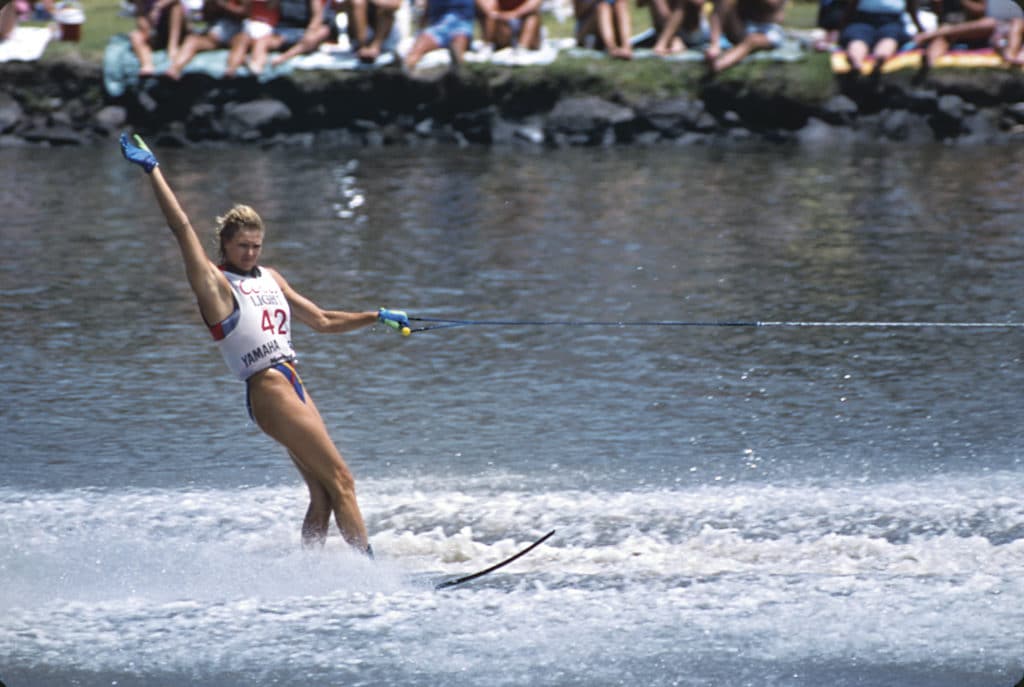
LET’S WELCOME WOMEN
Water skiing is about sharing unforgettable moments with loved ones at the lake. It can have a lifelong positive impact on someone, and it’s our duty as skiers to spread this. We need to think of ways to bring in new skiers, and the most obvious way is through more women. Women are just as capable as skiers, drivers and mechanics. We, as skiers, need to provide a more welcoming atmosphere for them — because this sport needs more women.
“The times are slowly changing,” Carroll warns us, “Let’s hope water skiing doesn’t get left behind.”

